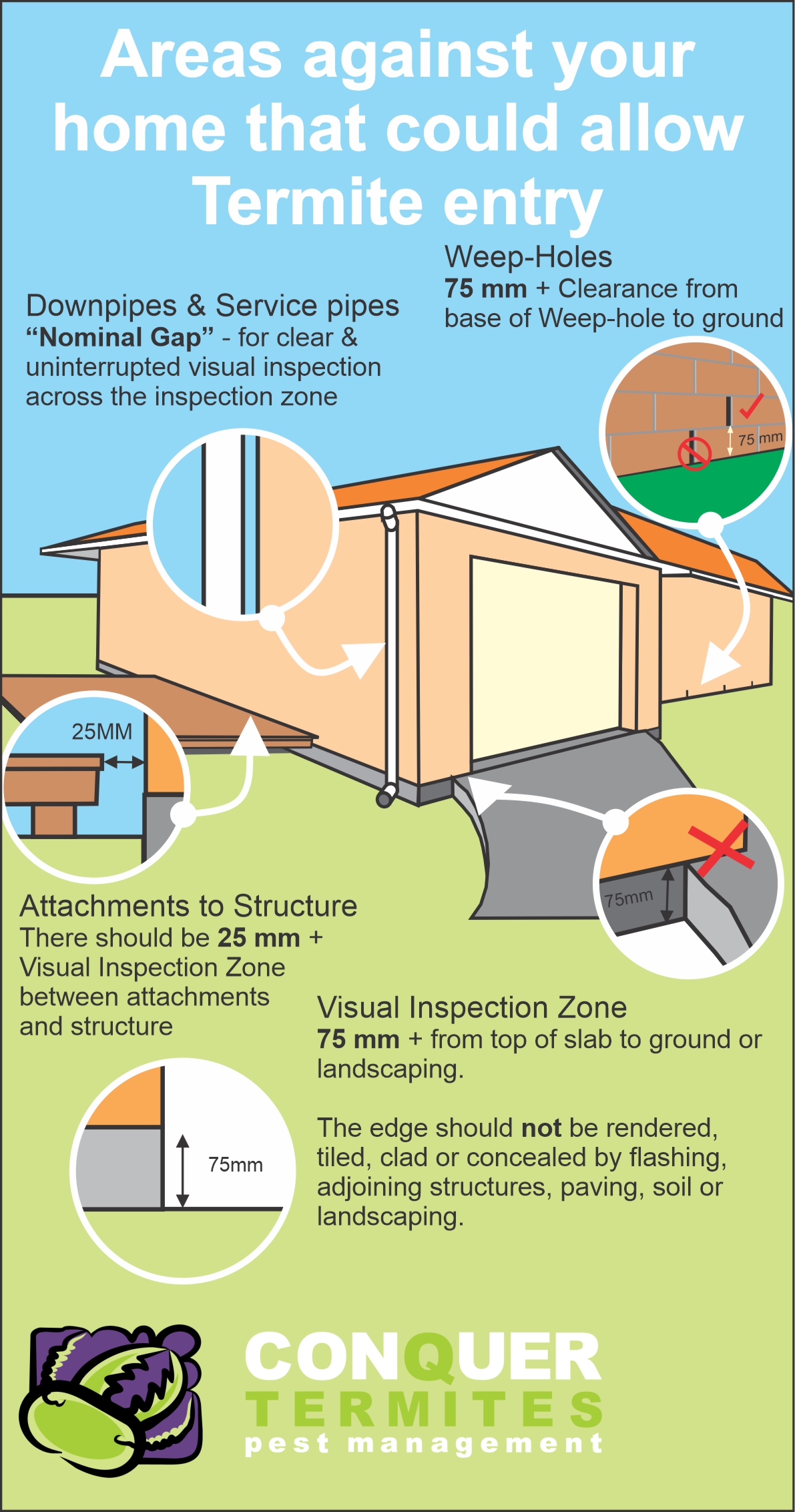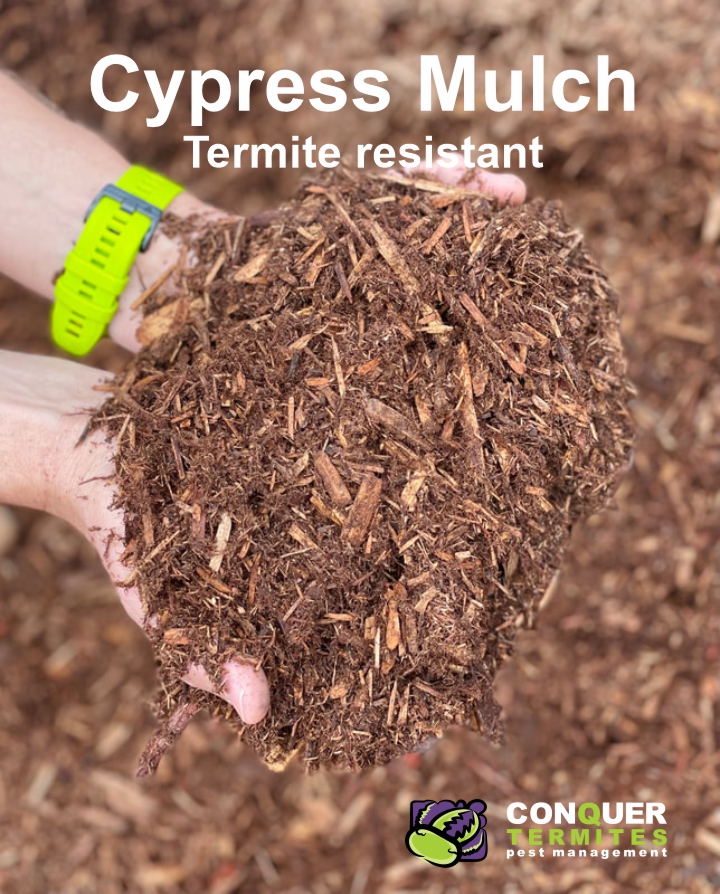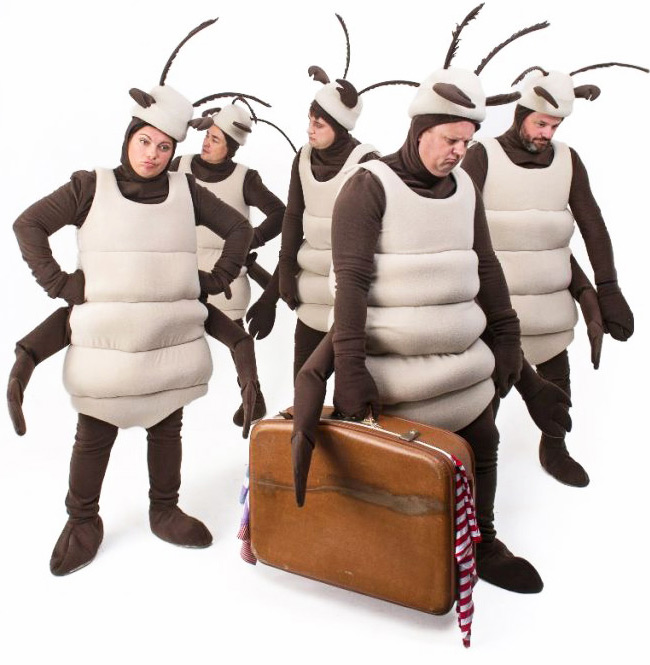Best ways to stop termites near your home?
Did you know nearly every garden in Brisbane will have foraging termites (white ants)? They say, on average, six different termite colonies are operating at any time near a house!
They’re there, but you won’t see them as termites travel through their subterranean tunnels, usually one foot below you.
You live in the biggest tree house in the garden, the ultimate prize for a hungry termite colony. On average, there are over 14 cubic square meters of soft plantation timber in the construction of an Australian home.
What you should do near your house to prevent termites
Reduce moisture near the house.
A constant source of moisture near a house can be the first thing to attract termites. Termites need water before timber to survive and flourish.
- Drainage/stormwater. Make sure stormwater drains away from the house and water doesn’t pool.
- Air conditioner drainage pipe. Connect the pipe to a drain or stormwater pipe.
- Sprinkler systems. Make sure it expells the water away from the house.
- Water features near the house. There might be an unknown leak, and the damp cool conditions under it are highly conducive. Just not a good idea.
What you can have near the house - Good things
- Concrete paths or pavers sloping away from the house
- Cut lawn with a mowing strip against the house
- Pebble or small stone garden beds (remember to keep the plastic weed matting 30 cm away from the house)
What you shouldn’t have against your house - Bad things
- Mulch - There are some ’termite-resistant’ mulch, but generally, mulch offers an ideal environment for termites to operate under. Read more in the section below.
- Weed matting against the house offers a lovely secure roof for the termites to travel under. It can also provide a mat for the termites to bridge over an existing chemical treatment - barrier.
- Don’t use newspapers or magazines as a weed mat. You will just entice termites with a yummy buffet before they enter your house.
- Piles of loose timbers like firewood
- Timber railway sleepers
Plants, trees and garden beds
- Don’t plant shrubs or large plants near the house - they grow. A small shrub planted against the house looks inconspicuous but will grow and develop more extensive root systems, plus it will impede visual inspection. If you want plants against your home, plant them in suitable pots.
- Never plant trees near your home. Same reason as the shrubs, but their roots can grow under the concrete slab! If you cut down a tree near your home, grind out the stump. After 3 to 4 years, tree stumps become a favourite nesting spot for termites.
- Keep raised garden beds 5 meters away from the house. You will always find plenty of earthworms and termites in a healthy garden bed. We believe it’s the ample combination of moisture and specific nutrients that attracts termites.
- Palm trees are the worst when planted next to the house. They have densely matted roots that break up any treatment and offer a conducive environment for termites.
- Maintain a visual inspection zone around the house. You should be able to walk and see the external perimeter without pulling back shrubs or vegetation to inspect.

Structural conciderations
Weep holes
Ensure there is good clearance from the bottom of the weep hole to the ground. They say 75 mm is the minimum separation you should have. There is nothing magical about 75 mm; it is just the thickness of a brick.
Probably the more important thing to understand is that if your bricks are going down into the soil, termites will likely find a gap in the mortar to gain concealed entry. So if you have an external brick wall, it is vital to have a current chemical treatment barrier.
Visual Inspection Zone
Maintain a continuous visual inspection zone of 75 mm continuously around the base house. The concrete slab edge should be visible to detect any termite leads bridging up. If the inspection zone has been compromised by landscaping, an appropriate termite management system must be installed.
Other structural concerns
- Ensure a gap is always under the fence or gate posts attached to the house. The recommended gap is 50 mm.
- If you build a deck against the house, ensure a minimum separation of 25 mm. If you attach the deck to the external wall, an appropriate termite management system must be in place.
- Posts should be on stirrups and not embedded in the ground.

Talking about mulch in your garden - what is the best mulch to stop termites?
Mulch is chipped or shredded timber that can be spread on garden beds to reduce weeds and help retain soil moisture.
It is uncommon for mulch to be a food source for termites. The pieces are too small for the termites to chew into, and being exposed, it is too close to the sunlight and hungry birds.
When you place mulch against your home, it offers an ideal foraging environment for termites. They love the moisture and can quickly build their workings as they forage towards your home.
A thin layer of stones or pebbles is more suitable, especially over a termite-treated zone (Remember not to have a plastic weed mat under the stones against the house).

What kind of mulch should I buy to stop termites?
There is no such thing as termite-repellent mulch that will stop termites. There are termite-resistant options that termites won’t eat.
- Cypress mulch: Made from plantation cypress growth
- Tea Tree mulch: Made by grinding up the wood and bark of Melaleuca tea trees.
Should I worry about termites coming with the mulch?
Sometimes when you receive mulch delivery from a Landscape supplier, you might find termites. As alarming as it is, you should not worry as they will eventually die.
They probably travelled from their nest to the mulch because it was moist and warm. Once disconnected from the nest and their colony, they will become disoriented and die in weeks.
If you want to speed up the process, spread the mulch out and let the sunlight and birds kill them.




